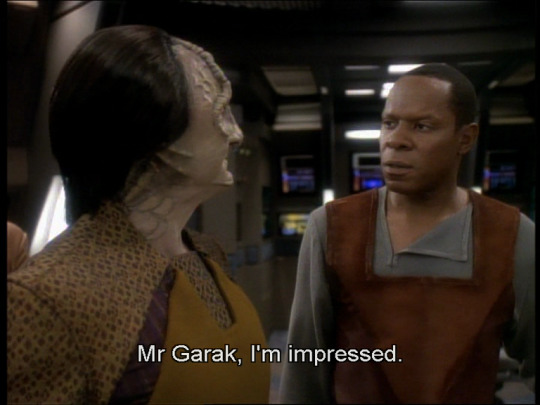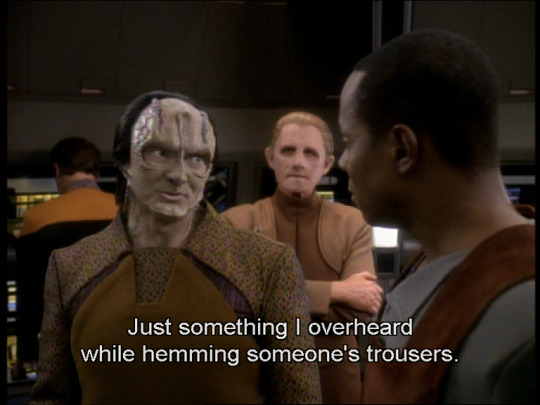Text
I just tried to share this with my wife and it wouldn’t let me because she has no tumblr account. So instead I took a picture of my laptop and and sent this to her via text.

65K notes
·
View notes
Text
Yeah so Spider Verse did it again and it's one of my favorite recent movies ever and for certain this year and I'm actually not totally weirded out by the fact that two of the greatest multiversal villains in existence were created somehow created by a bagel, but it is kinda weird that it happened twice.

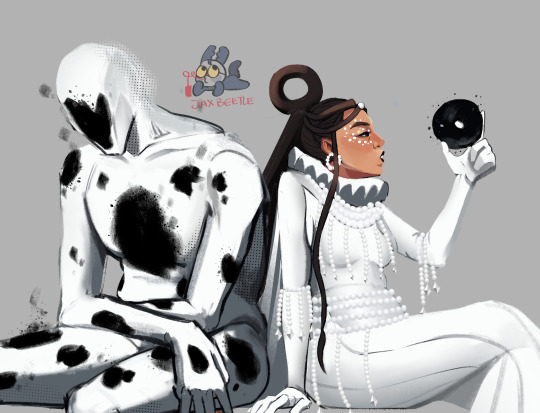
Everything Across the Spider-verse All at Once
19K notes
·
View notes
Photo

Magic Mushrooms for Depression: Brain Scans Show What’s Happening
A new study has shed light on what’s going on in the brain as psilocybin treats depression
Imagine a house share of several people. The house, technically, functions fine. One housemate sorts out the food. One earns the money. One cleans. One does laundry. Except they don’t help each other, don’t collaborate, and don’t listen to each other. They don’t even talk to each other.
Sounds pretty miserable in there, right? In a very simplified way, that’s what a new study has found is going on in the mind of depressed people, with different parts of the mind working isolated from the others.
Psilocybin, the substance responsible for the magic in magic mushrooms, has been under study for some time now and showing very promising results to help with depression. But on a physical level, no one, until now, knew why. Now, scientists have had a glimpse with the help of brain scan machines.
Let’s go back to that miserable house share. Now, the housemate in charge of the food has prepared a new soup for the housemates, and it contains magic mushrooms. What happens next? They all start talking to each other. And suddenly, overnight, the place gets happier. The even better news is that the next day, after the mushrooms have worn off, the walls have stopped moving and the pattern on the sofa has stopped being so incredibly funny, the housemates are still talking to each other. The living experience in the house has been transformed. It’s no longer a miserable place to be. No longer so… depressing.
So it is, according to the new brain scan study, with psilocybin and the depressed brain. Parts of the brain that struggled to interact and remained entrenched in their neural patterns became more fluid and communicated more with other parts of the brain.
One important element of these findings is they show how psilocybin works differently to antidepressants. As study author David Nutt says;
“These findings are important because for the first time we find that psilocybin works differently from conventional antidepressants — making the brain more flexible and fluid, and less entrenched in the negative thinking patterns associated with depression. This confirms psilocybin could be a real alternative approach to depression treatments.” — Nutt
For sufferers of depression who haven’t been responsive to antidepressants, this is very promising indeed. Especially when compared with a traditional antidepressant, psilocybin appears to work faster and with longer-lasting effects.
How effective was the psilocybin in this study?
Participants in the study had taken psilocybin twice over three weeks, as part of previous studies on psilocybin therapy. The results can be compared to people who take an antidepressant pill daily:
Psilocybin: After three weeks and two psilocybin experiences, participants averaged a drop in depression scores of 64%. Low depression scores were maintained for at least six months.
Antidepressant pills (Lexapro): After six weeks of daily pills, the depression score dropped by 37%, with the improvements not expected to continue after stopping the course.
So, on paper, that’s a win for the mushrooms.
While the pills target serotonin levels to help with the feelings of depression, the psilocybin gets parts of the brain talking, so the negative feelings are less entrenched. The brain can find new ways of doing things by talking to itself in a way a depressed brain can’t.
So, magic mushrooms are better than antidepressants then?
That’s not necessarily the case, though it’s easy and tempting to jump to that conclusion. It’s complicated and what works for one won’t work for another.
There’s a very common fallacy that you can spot in the thoughts of the psychedelic community, especially in users of mushrooms and Ayahuasca. That common thought is this: ‘Of course mushrooms are better than antidepressants… pills are synthetic chemicals, mushrooms are natural.’
This is called the appeal to nature fallacy, where our minds like to simplify things to nature is good, unnatural is bad. This is not good thinking. If you pick the wrong mushroom, you will die horribly, however natural it was. Deadly nightshade berries are called that for a reason. We can’t let our brains fall for the ‘nature is better’ trick.
This is why we rely on science. If we’re making personal decisions on how to treat ourselves, even if self-medicating, we need to be able to think clearly to make our decisions and not fall for common thinking errors.
Internal communication for mental health has a precedent
There’s a fascinating branch of therapy called Internal Family Systems (IFS), where the idea is to get parts of the mind to talk to each other and come to agreements and work together. The system uses talk and imagination.
In early research, the method has been showing positive results for treating depression, even in cases where medication and the more common cognitive behavioural therapy haven’t helped.
In the houseshare analogy, IFS would be like having a therapist show up, sit the housemates down, and get them talking and coming to agreements.
The two methods of creating in-brain communication both seem to be very effective. But we can’t assume they’re doing the same thing.
Psilocybin is shown through scans to improve communication in different parts of the brain. IFS encourages communication in different parts of the mind. These parts of the mind don’t necessarily live in different parts of the physical brain.
The two methods support each other in certain important aspects though: depression can be helped by getting whatever is in our heads to communicate better with itself. They do that in using very different ways.
In a nutshell, the study says psilocybin may work like this;
“…psilocybin’s antidepressant action may depend on a global increase in brain network integration.” — study authors
Internal Family Systems, like this;
“Just as our bodies are made of many parts that form a dynamic, interwoven system that works together, so it is with
our psyches.” — Ralph de la Rosa
There’s one more little bit of psychology that we can possibly infer that our wellbeing is related to internal communication of different parts, be that of the mind or the brain: how we refer to ourselves in our inner voice affects our wellbeing.
People who talk to themselves as “You” generally have better wellbeing than those using “I”. There’s no inter-mind communication using I. The part of us that I refers to is itself. When you comes into it, that’s a part of us separate from the bit that uses I. People who use “We” also tend to feel better than those who use I. This again could be related to in-mind communication. This is all inferred and would need proper study.
But what if this inter-mind/brain communication could be done with extra love and compassion for the parts that communicate? Could that help?
Enter MDMA.
MDMA therapy and in-brain communication
MDMA, also under much study to help with various psychological disorders, works, in a super-simplified explanation, by adding compassion to proceedings. In the case of PTSD, for example, it’s by adding compassion to the memories that underly the trauma.
So would adding MDMA to IFS therapy add compassion to how we view and communicate with ourselves, and aid our mental health? The link is in early stages, but it seems so. That’s like entering our miserable houseshare and passing around ecstasy pills — and getting the housemates to talk to and feel very fond of each other in a way the compassion will last even after the drug has worn off. That’s a healthy state for a brain to live in.
Back to the psilocybin study, and brain communication. Would adding MDMA to mushrooms be useful in the same way? Possibly. Research into such an idea has begun, though first with LSD rather than psilocybin. Underground, adding MDMA to mushroom therapy has been used to aid the experience, and to take the edge off a bad psychedelic experience. If inter-brain communication really is the key to aiding depression with psychedelics, adding some extra compassion to the mix may be an effective idea.
Talk to yourself
It seems that one possibility is that helping depression may come down to good, old-fashioned communication. It may just mean doing it on the level of neural pathways with the assistance of psychedelics such as psilocybin.
Don’t rush out and buy or pick yourself a bag of mushrooms though. The study authors stress not to self-medicate based on these results, and psychedelics can have dangers for some people. Taking psychedelics for any reason is a big decision and should be considered thoroughly, with risks in mind as well as benefits.
The new study is another in the growing list in support of using psychedelics to help with mental health, and one of the first to give a clue of how they work physically in our brains. Plenty more research is to come.
By Alexander M. Combstrong (Medium). Image: Pixabay at Pexels.
438 notes
·
View notes
Photo


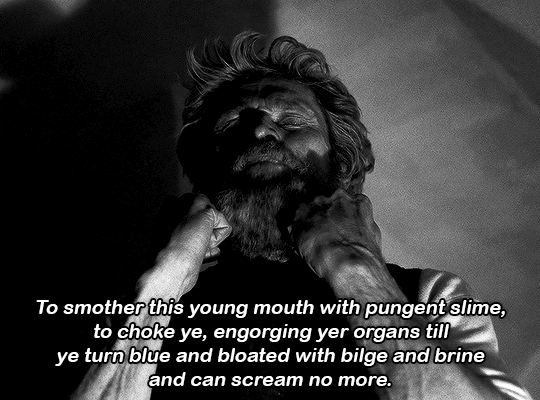


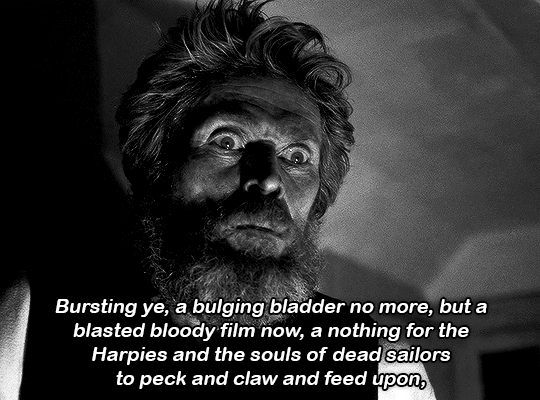




All right. Have it your way. I like your cooking.
THE LIGHTHOUSE (2019)
- dir. Robert Eggers
2K notes
·
View notes
Text
“Emotional granularity is a bit like wine tasting. Wine experts perceive extremely subtle variations in flavor, even among different batches from the same vineyard. People with less experience might not taste these differences, but perhaps they can at least distinguish a pinot noir from a merlot or cabernet sauvignon. A wine novice is much less capable of making these distinctions—perhaps he can tell dry wine from sweet wine, or perhaps they both just taste like alcohol. Likewise, people who exhibit high emotional granularity are emotion experts. Their brains can automatically construct emotional experiences with fine differences, like astonished, amazed, startled, dumbfounded, and shocked. For a person who exhibits more moderate emotional granularity, all of these words might belong to the same concept, “surprised.” And for someone who exhibits low emotional granularity, these words might all correspond to feeling worked up. Emotional granularity is a key to emotional intelligence. If your brain can construct many different emotions automatically and make fine distinctions among them, it can tailor your emotions better to your situation. You’re also better equipped to anticipate and perceive emotion in others in the blink of an eye. The more emotions that you know, the more finely your brain can construct emotional meaning automatically from other people’s actions. Even though your brain is always guessing, when it has more options to guess with, the odds are better it will guess appropriately. How do you enable your brain to create a wider variety of emotions and improve your emotional intelligence? One approach is to learn new emotion words. Each new word seeds your brain with the capacity to make new emotion predictions, which your brain can employ as a tool to construct your future experiences and perceptions, and to direct your actions. Instead of perceiving someone as generically “glad,” learn to distinguish more specifics. Are they “overjoyed” or “contented” or “grateful?” Are they “angry” or “indignant” or “resentful” or “bitter?” More fine-grained emotions allow your brain to prepare for an array of different actions, whereas more generic emotions (angry, glad) confer less information and restrict your flexibility. The idea that you can increase your emotional intelligence by broadening your emotion vocabulary is solid neuroscience. Your brain is not static; it rewires itself with experience. When you force yourself to learn new words—emotion-related or otherwise—you sculpt your brain’s microwiring, giving it the means to construct those emotional experiences, as well as your perceptions of others’ emotions, more effortlessly in the future. In short, every emotion word you learn is a new tool for future emotional intelligence.”
— Lisa Feldman Barrett, “Emotional Intelligence Needs a Rewrite”
599 notes
·
View notes
Text
Theory:
So you know how dwarves have that thing with beards? What if that’s not just a cultural standard or mere coincidence? What if there’s a reason?
See, dwarves like to dig a lot. They build underground homes, and there’s nothing more rewarding to them than digging up some gems or valuable metals. But chipping away at all that rock and disturbing all that earth kicks up a lot of dust and dirt. If you do that every day without proper breathing protection (which Ancient Dwarves probably didn’t have much access to) all those particles are going to build up in your lungs. It’s a phenomenon we see with real miners too; eventually, they develop a host of respiratory-related problems and even lung cancer.
Now, if only dwarves had some sort of natural protection against all that fine dust. If only they had some sort of filter in front of their mouth an nose…
My theory states that, through natural selection, dwarves developed more and more dense facial hair as a defense mechanism.
19K notes
·
View notes
Text
remember when in young avengers kate was shook bc her whole team was gay except her, and then america shut her down immediately, thus confirming that there’s not a single straight young avenger?? iconic


5K notes
·
View notes
Photo
heh. I admit I was stunned they had a kid slap another kid’s ass on a Disney cartoon.
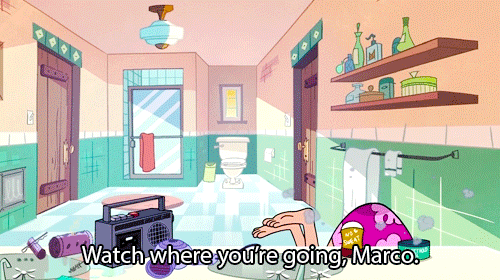
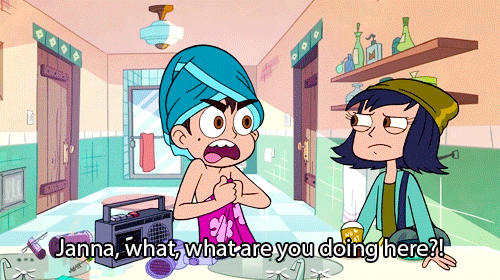



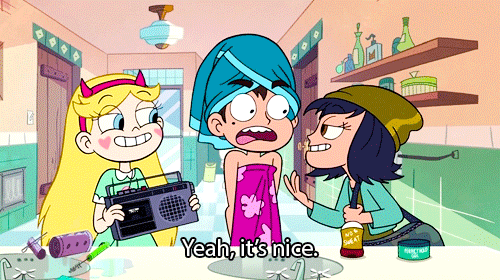
1K notes
·
View notes
Text
edgy new homestuck ending theory: i see your kids escaped the narrative and i raise you they also brought a bunch of other bullshit with them. clowns are now running amok in america. the events that are defining 2016 as the unimaginable year it is are actually just a string of performance pieces, a continuation of homestuck organized by andrew hussie himself. the kids can’t escape their comic and now neither can we. welcome to the metaverse kiddies.
7K notes
·
View notes
Text
Here’s your everyday casual reminder that the original Steven Universe is dead and we’re all watching everything that happens in an alternate timeline.
No really.
I’ve only been in the Steven Universe fandom for a few months now but I haven’t seen anyone talk about this.
The episode Steven and the Stevens is admittedly not one of my favorite episodes. I think they made Steven (and Steven and Steven and Steven and Steven and St) way too annoying and out of character. But it also brings up one of the most fascinating plot points in the entire show that nobody in the fandom seems to want to talk about. Or maybe, as a newcomer, I’m just looking at it wrong but I think the evidence is clear.
The episode starts off with Steven getting the hourglass and going back in time:

There he styles his hair:

Which is really important; this way we know that he is Steven, our Steven.
So chaos ensues and he eventually goes back to stop his past-self from getting the hourglass:

Which causes him to go mad with power:

He then realizes that none of this is right and he realizes that there’s only one way to fix it - destroying the hourglass:


And then he dies.
And then he dies:

He dies.
The original Steven Universe dies!
The Steven that we’ve watched for twenty-two episodes at this point dies, scarring his past-self who now lives in an alternate timeline where he never used the hourglass to go back in time.
Granted, we’re still watching Steven. But he’s slightly different than the original Steven that we’ve watched for twenty-two episodes. That Steven completely sacrifices himself and dies a horrific death on-screen and nobody seems to want to talk about it!?
And now, everything that has happened since that episode and everything that will happen is on an alternate timeline.
Don’t believe me?
Steven says it himself, when he’s singing at the end of the episode:
“I accidentally created an alternate timeline.”
Boom.
The original Steven Universe is dead and everything that we’re watching now is on an alternate timeline.
49K notes
·
View notes
Photo




Steven Universe x Scott Pilgrim crossover part 4 of xx
14K notes
·
View notes






